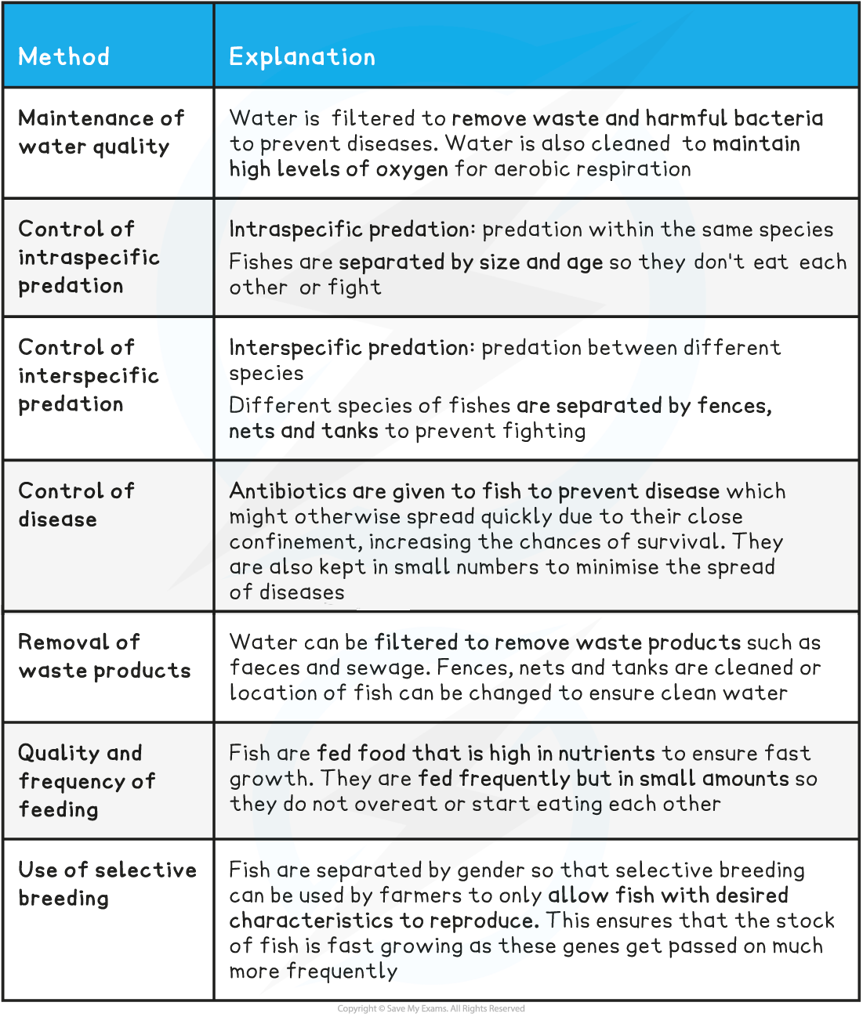- 翰林提供学术活动、国际课程、科研项目一站式留学背景提升服务!
- 400 888 0080
Edexcel IGCSE Biology 复习笔记 5.1.6 Fish Farming
Edexcel IGCSE Biology 复习笔记 5.1.6 Fish Farming
Fish Farming
Benefits of fish farming
- Most fish are still caught in the wild (i.e. in the open ocean or in freshwater rivers and lakes)
- However, overfishing has lead to dramatic declines in many fish populations
- Fish farms are ways of raising large numbers of fish in a small space to provide food (protein) for humans
- This has several advantages over wild-caught fish, including:
- The ability to selectively breed fish to ensure high quality, fast-growing fish
- The ability to protect against predators
- The ability to control water quality (many wild-caught fish have significant levels of pollutants such as mercury in their flesh)
- The ability to control feeding to ensure rapid growth
Methods used in fish farms to ensure high yield
- Within fish farms, large numbers of fish are kept in freshwater or seawater enclosures and are carefully monitored and controlled in many different ways
- This helps to ensure high yields (fast growth of healthy fish)
- The methods used include:
- The control (and maintenance) of water quality
- The control of intraspecific predation
- The control of interspecific predation
- The control of disease
- The control (and removal) of waste products
- The control of the quality and frequency of feeding
- The use of selective breeding
Fish Farming Methods Table

转载自savemyexam

最新发布
© 2025. All Rights Reserved. 沪ICP备2023009024号-1









